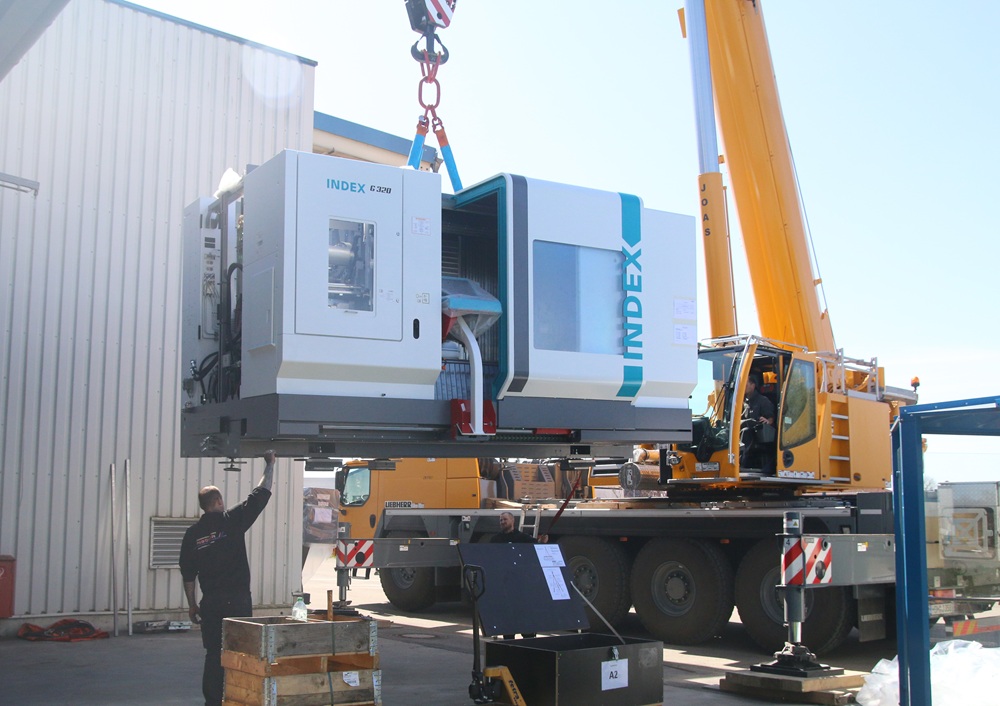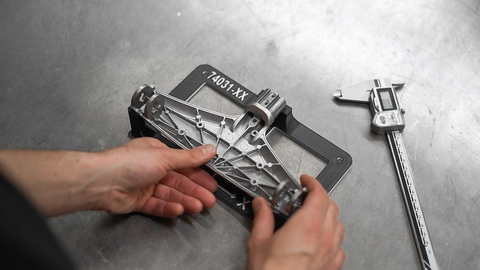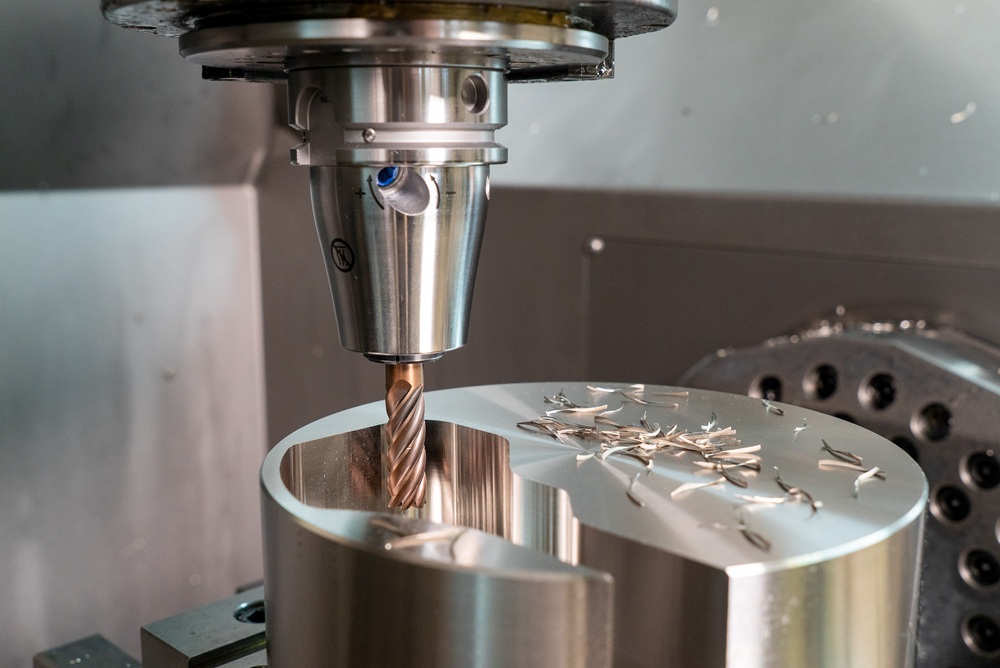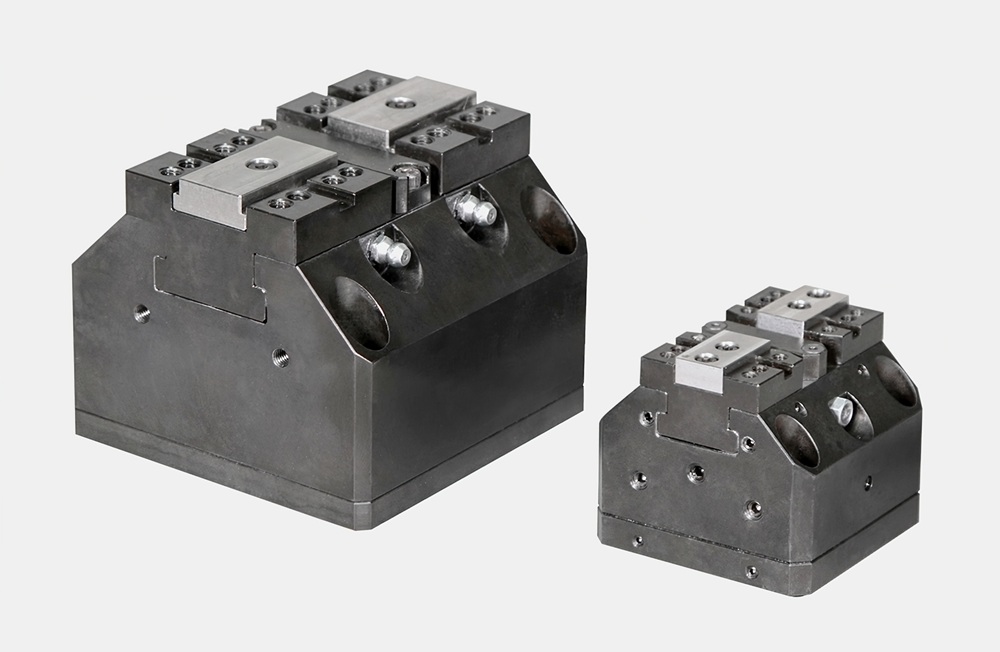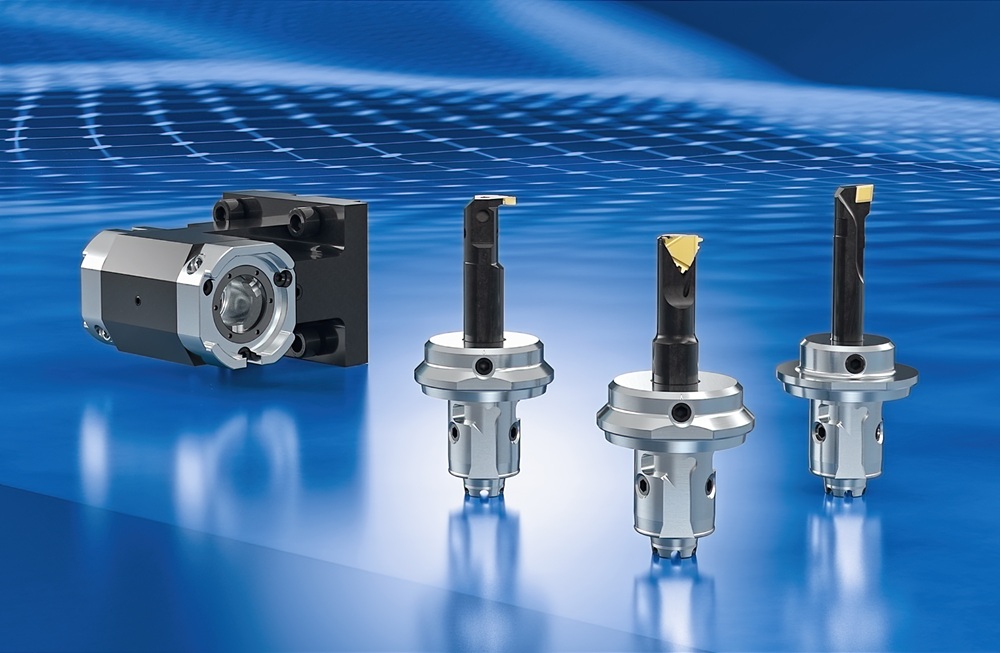Work-holding equipment specialist Röhm has invested over €800,000 in a new Index G320 turn-mill centre. The company says the investment underlines high levels of confidence in its innovation and long-term competitiveness.
The investment project was launched exactly one year ago and the machine is currently in the commissioning phase following installation. Commissioning will make the production of components for cylinders, which were previously turned and then drilled in two individual clamping operations, significantly faster and more efficient. The Index G320 replaces older machines that have reached the end of their life cycle.
The machine is characterized by its special technical features: it has two workpiece spindles, three tool carriers (two star turrets and a milling spindle) and 12 axes that work synchronously with each other. A unique feature is the ability to move the turrets out from under the chucks, creating space for the other turret.
With a weight of 21 tonnes, the machine offers space for up to 80 tools (24 on the turrets and 56 for the milling spindle). It is equipped with chucks, steady rests and Röhm’s iJaw technology. iJaw facilitates the measurement of clamping force in real time during the process to ensure maximum process reliability. Errors are detectable at an early stage, which increases productivity and sustainably improves workpiece quality.
In the coming weeks, the machine will undergo final commissioning and a final acceptance test. Once the tests are complete, operators will undergo training to ensure a smooth start to production.
With this investment, Röhm is demonstrating that innovation and safeguarding the future are top priorities, even in challenging times.
More information www.roehm.biz






